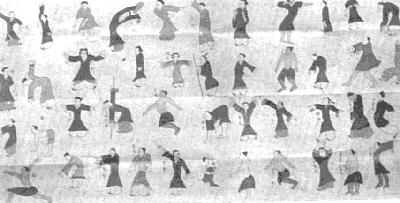Tai Chi: Traditional Yang Style

Tai Chi Chuan is one of the oldest forms of Chinese exercise for health and is sometimes refered to as "moving meditation". The purpose of Tai Chi Chuan is to harmonize the energies of the mind, body and spirit in order to attain 'balance'.
YANG STYLE
In the Hong Ying Schools we follow the teachings of the Yang style, which has passed directly to our teacher, DOC-FAI WONG, who is a second generation Grandmaster of the style.
TAI CHI WEAPONS
Amongst the various forms within the style, we also practise Tai Chi weapons, like Jian (straightsword) and Tai Chi Sien (fan).
CHI
During the Tai Chi classes we also give considerable time over to Chi Kung meditation, to enable the development of the 'inner strength'. In these classes we also study Tuishou, or 'push-hands' technique whereby two students will attempt to bring each other out of balance by 'tuning' in to the 'chi' of their opponent.
Although Tai Chi is often taught as a seperate style in some schools it is considered to be very much a part of the complete Hung Sing Choy Li Fut system, and goes 'hand-in-hand' with the more dynamic 'Kung Fu' exercises. One only becomes truly balanced by understanding the 'soft' and the 'hard', or the Yin and the Yang.
DAO-YIN TU
Dao-Yin postures found on a piece of silk from an archeological dig near Changsha, Hunan province. The scroll dates from about 168 BC (the date of the owner of the tomb's death and burial) and is approximately 50cm high and 100cm long, containing four rows of eleven figures each. The chart was named Dao-Yin Tu (The Dao Yin Illustrations) and represent all of the major methods of QiGong; breathing, static postures, movement, and self massage. Seated, lying and standing postures all are covered. Captions describe how to move the body, and some mention specific diseases - suggesting that the use of QiGong for specific medical purposes was already occurring at this time. The fact that some of the postures, and many of the instructions in the inscriptions, are recognizable today is an indication of the development of the art at the time.

